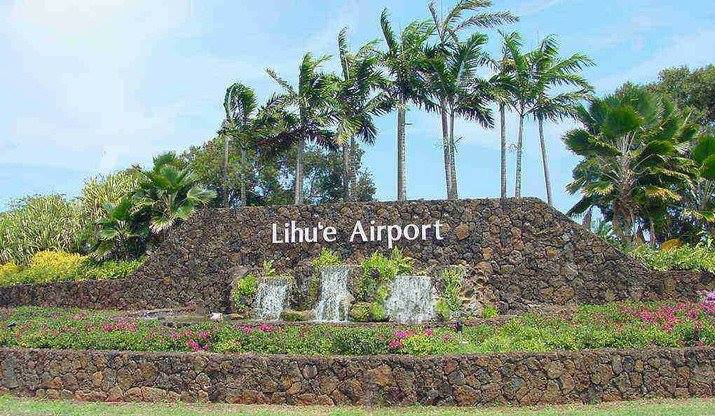Interisland Travel Returns, Not Necessarily Indefinitely
As of today, Hawai‘i’s Interisland travel quarantine is a thing of the past, but that doesn’t mean it won’t also be part of the state’s future.

Gov. David Ige is lifting intrastate travel restrictions just as cases of COVID-19 begin to pick up amid the reopening of most businesses and climbing limits on indoor and outdoor gatherings statewide. Over the last week, Hawai‘i has reported 62 cases across all islands including a daily high of 17 on Saturday — the largest one-day total in more than two months.
“It’s not gone. It’ll never be gone,” Hawai‘i Department of Health Director Bruce Anderson said Monday.
He added that he believes the case spike has most to do with fewer people wearing required face masks in public and physical distancing having likely been pushed down the queue from the top of people’s minds.
Keeping up its guard, Anderson said, is the best weapon the public has against the spread of COVID-19 under current social and economic conditions that now include at least semi-regular commerce as well as interisland travel.
It would likely be weeks before any restrictions would be reapplied to travel between islands, but circumstances that could cause such a disruption do exist.
Ige said there are two scenarios state health experts are watching for, under which he would consider pausing reopenings or potentially reinstating now lifted travel restrictions. Neither has much to do with daily numbers, like Saturday’s increase of 17 cases of the virus, but instead focus on numeric trends and geographic information.
The first scenario would involve an exponential increase in virus activity, implying COVID-19 was spreading at an “out of control” rate. This would be defined by case counts doubling for two consecutive incubation periods of 14 days each. In other words, if identified positives for the virus doubled for four consecutive weeks, that would warrant action to change travel and/or economic conditions.
A second scenario would involve the identification of several unconnected cases over a wide geographic region. For instance, if eight or more cases popped up across different Big Island districts over a short period of time and proved unrelated to one another, that would indicate an increased level of viral activity high enough to require a pause in reopening procedures and the potential reinstatement of an interisland travel quarantine.
Clusters of COVID-19 cases, while disconcerting to the public, are less of a concern from a public health perspective because their origins can be traced, and the spread tracked and understood.
Part of the governor’s confidence in moving forward with lifting the quarantine as island commerce simultaneously reawakens is the development of a joint contact tracing program between DOH and the University of Hawai‘i.
More than 375 people have signed on to be a part of the program, with 54 already trained and ready to begin working Monday, most of whom are registered nurses, Anderson said. That number is expected to jump to 250 tracers by the end of June.
The program is comprised of two tracks. The first takes only one and a half days to complete and is meant for individuals with both an undergraduate degree and background in clinical health. The second accepts people without professional healthcare experience but still requires a college education.
The second track takes several weeks. However, its initial cohort of 31 tracers began Monday. This program is expected to continue on for “a long time,” Anderson said.
Despite the implication of Anderson’s comments that Hawai‘i will be dealing with a serious COVID-19 threat for months or even years to come, the governor spoke a bit more freely Monday about the return of widescale trans-Pacific travel in some form over the summer.
“If we can get it done in July, we’ll get it done in July,” Ige said. “August is more realistic.”
Total arrival numbers to the state have edged upwards of 2,000 over the previous two days, though not all of those are visitors. Average daily arrival numbers pre-pandemic registered at roughly 30,000, if not more. But arrivals shrunk to around 500 per day after Ige announced his travel quarantines in late March.
The 14-day, out-of-state quarantine will still be in place in July or August or whenever the world begins to return to Hawai‘i en masse, Ige said, which will undoubtedly complicate the airport experience for travelers of all stripes. Trans-Pacific travelers subject to the quarantine will mix in with interisland travelers who aren’t bound by the same restrictions.
Once, and if, the state can enact its desired plan to receive certified negative test results for incoming travelers, then a third category of arrivals will emerge — those who are from out-of-state but don’t need to abide by quarantine rules because their test results render those arrivals exempt.
Beginning today, new travel procedures will go into place, including the requirement of filling out a travel form. It is now available online at the DOH website.
“I strongly encourage you to do that before you leave home and arrive at the airport,” Ige said of filling out the document.
The interisland flight process is expected to take significantly longer start-to-finish under the new rules, the governor continued. He asked travelers for patience and understanding as the state figures out its new path while simultaneously trying to walk down it.





